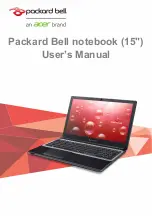
13 May 2002
This file contains the most up-to-date information on the following topics:
Sources of Information about the HP notebook computer and Windows
Precautions
Reprogramming the One-Touch Buttons
Using Wireless LAN
Using a TV as a Monitor
Connecting Serial Devices
Working with Graphic-Intensive Applications
Running e-Diagtools Diagnostics
Windows XP
Microsoft Plus! Not Recommended
Windows 2000
Playing DVDs or Multimedia with Multiple Displays
Best Practices for Using Your HP Notebook Computer
Physical Care
General Use
Sources of Information
* The printed
Startup Guide
introduces the notebook computer and shows you the basics. It also contains
troubleshooting information.
* The online
Reference Guide
shows how to set up the operating system, install and connect accessories,
and maintain and upgrade the computer (for Windows XP, click Start, Help and Support, HP Library, or
for Windows 2000, click Start, Programs, HP Library).
* The Microsoft Windows manual, shipped with your computer, contains information about using the
standard features of your Windows operating system.
* For updates to the BIOS and other technical documentation, connect to our website at
http://www.hp.com/notebooks or http://www.europe.hp.com/notebooks (European mirror).
Precautions
This section describes certain situations that could cause serious loss of data.
Do not remove a data storage PC Card while it is actively reading or writing. This could cause its data to
become corrupted.
Certain applications, such as Intuit's Quicken, keep their working files open, and they update the files as you
make changes. For such applications, you should open only files that reside on the hard drive, not on a
removable disk. An open file on a removable disk (such as a floppy disk or PC Card) is susceptible to
corruption in certain situations.






















